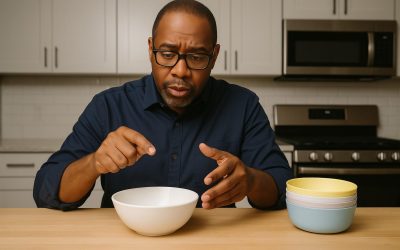As an Amazon Associate I earn from qualifying purchases.
In the realm of culinary simplicity, few staples rival the universal appeal of rice. Whether it’s the comforting embrace of steaming white rice, the fragrant allure of Basmati, or the wholesome nuttiness of brown rice, this humble grain takes center stage in kitchens around the world. And when it comes to cooking it to perfection, an IMUSA rice cooker is a trusted ally.
But what truly sets apart a well-cooked bowl of rice from a lackluster one? The secret lies in the precise balance of rice and water—a culinary equation that, once mastered, ensures consistently fluffy, tender grains with each batch. Welcome to the world of IMUSA rice cooker rice-to-water ratios.
In this article, we dive deep into the art and science of achieving that ideal rice texture with your IMUSA rice cooker. Whether you’re a novice cook looking to conquer the basics or a seasoned chef aiming for culinary perfection, understanding the rice-to-water ratio is your key to rice-cooking mastery.
We’ll unravel the intricacies of rice types, from long-grain to short-grain, Basmati to Jasmine, and even the heart-healthy brown rice. Each variety demands its unique rice-to-water ratio to shine. Our journey will encompass not only the fundamentals but also expert tips, troubleshooting common pitfalls, and uncovering the nuances that set apart a perfectly cooked bowl of rice.
So, if you’ve ever wondered how to consistently achieve rice that’s neither undercooked nor mushy, this article is your comprehensive guide. Together, we’ll unlock the secrets to rice perfection, one grain at a time, and elevate your culinary prowess with the help of your trusted IMUSA rice cooker.
Get ready to embark on a journey of taste, texture, and tradition as we explore the art of IMUSA rice cooker rice-to-water ratios.
Imusa Rice Cooker Rice to Water Ratio
The rice-to-water ratio in an IMUSA rice cooker may vary slightly depending on the type of rice you are cooking and your personal preferences. However, as a general guideline, you can use the following rice-to-water ratios for some common types of rice:
White Rice (Long-Grain, Jasmine, Basmati):
- Use a ratio of 1 cup of rice to 1.5 to 1.75 cups of water. The exact amount may vary depending on the desired level of rice fluffiness. Start with 1.5 cups of water per cup of rice and adjust based on your preference.
Brown Rice (Long-Grain or Short-Grain):
- Use a ratio of 1 cup of brown rice to 2.5 to 3 cups of water. Brown rice requires more water and a longer cooking time compared to white rice.
Arborio Rice (for Risotto):
- Use a ratio of 1 cup of Arborio rice to 4 cups of liquid (water, broth, or a combination). Arborio rice absorbs more liquid when making risotto.
Basmati or Jasmine Rice (for Fluffier Texture):
- If you prefer your Basmati or Jasmine rice to be fluffier, you can use a slightly lower ratio, such as 1 cup of rice to 1.25 to 1.5 cups of water.
It’s important to note that these ratios are general guidelines, and some variation may be necessary based on factors such as the specific IMUSA rice cooker model, altitude, and personal preference for rice texture. It’s recommended to consult the user manual for your specific rice cooker model to see if it provides any specific rice-to-water ratio recommendations.
Additionally, experimenting with the ratio and making adjustments to suit your taste is a common practice. Keep in mind that practice and experience will help you determine the ideal rice-to-water ratio for your preferred rice texture when using your IMUSA rice cooker.
Frequently Asked Questions (FAQ’s)
Here are some expertise questions and answers related to the rice-to-water ratio in IMUSA rice cookers:
Q: How do I determine the correct rice-to-water ratio for my IMUSA rice cooker?
A: The rice-to-water ratio depends on the type of rice you’re using and personal preference for rice texture. IMUSA rice cookers typically provide general guidelines in the user manual. Start with those recommendations and adjust based on your preference for firmer or softer rice.
Q: Can I use the same rice-to-water ratio for different types of rice in my IMUSA rice cooker?
A: Different types of rice may require slightly different rice-to-water ratios. While a standard ratio can work for most types, it’s best to consult the user manual for your specific IMUSA rice cooker to ensure you’re using the recommended ratios.
Q: What should I consider when adjusting the rice-to-water ratio for a firmer or softer rice texture in my IMUSA rice cooker?
A: For firmer rice, use a bit less water than the standard ratio. For softer rice, add a bit more water. It’s advisable to make small adjustments and keep notes until you find the perfect ratio for your taste.
Q: Can I add seasonings or flavorings to the water when cooking rice in my IMUSA rice cooker?
A: Yes, you can add seasonings, herbs, or broth to the water when cooking rice in your IMUSA rice cooker. This can infuse flavor into the rice. Just ensure that the additional liquid doesn’t significantly alter the rice-to-water ratio.
Q: Are there any tips for maintaining the quality of rice when using an IMUSA rice cooker?
A: To maintain rice quality, use the appropriate rice-to-water ratio, and avoid lifting the lid during cooking to prevent heat and steam from escaping. Once the rice cooker switches to the “Keep Warm” mode, fluff the rice with a fork to release excess steam and prevent mushiness.
Q: How does altitude affect the rice-to-water ratio when using an IMUSA rice cooker?
A: At higher altitudes, water boils at a lower temperature, and rice may require more water and longer cooking time. Consult the user manual for your rice cooker, as it may provide altitude-specific recommendations.
Q: Can I find rice-to-water ratio guidelines for specific types of rice in IMUSA recipe books or on their website?
A: IMUSA often provides rice-to-water ratio guidelines in their recipe books and on their website for various types of rice and rice cooker models. These resources can be helpful when determining the correct ratio for your specific rice cooker and rice type.
These questions and answers offer valuable insights into determining the appropriate rice-to-water ratio when using an IMUSA rice cooker, taking into consideration factors like rice type, personal preference, and altitude.
Conclusion
As we bring our journey into the world of IMUSA rice cooker rice-to-water ratios to a close, it’s clear that the path to perfect rice is not just about measurement; it’s a culinary adventure filled with flavor, tradition, and precision.
We’ve unraveled the mysteries of various rice types, from the elegance of Basmati to the heartiness of brown rice, and discovered the unique rice-to-water ratios that make each grain sing. Along the way, we’ve unearthed expert tips, troubleshooting insights, and the importance of experimentation to tailor your rice to your personal preferences.
In your IMUSA rice cooker, you possess a kitchen companion that not only simplifies the art of rice cooking but also empowers you to explore a world of flavors, textures, and international cuisines. With every perfectly cooked grain, you’ve harnessed the power of precision and brought a touch of culinary mastery to your table.
So, as you savor the fruits of your newfound expertise—whether it’s a fragrant jasmine rice side dish, a hearty brown rice bowl, or a creamy risotto—remember that the journey to culinary perfection is an ongoing one. Keep experimenting, keep refining, and keep delighting in the world of possibilities that your IMUSA rice cooker unlocks.
As you embark on future culinary adventures, let the lessons learned here be your guide, and let the aroma of perfectly cooked rice continue to fill your kitchen with warmth, comfort, and the promise of delicious meals shared with loved ones.
Here’s to the joy of cooking, the pleasure of discovery, and the enduring appeal of the simple yet profound art of rice.






